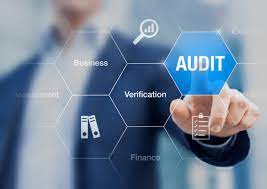Introduction:
IT Audit Services play a pivotal role in today’s technology-driven business landscape, ensuring that organizations maintain the integrity, security, and efficiency of their information technology systems. As the digital realm continues to evolve and expand, the need for comprehensive assessments of IT infrastructure and operations has become increasingly critical. These services encompass a wide range of processes, from evaluating data security protocols and compliance with industry regulations to assessing the reliability of software systems and the effectiveness of IT risk management. In an era marked by constant technological advancements and the ever-present threat of cyberattacks, IT Audit Services have emerged as an indispensable safeguard, providing businesses with the assurance that their digital assets are not only secure but also optimized for peak performance and resilience.


Important points:
- IT service management assess an organization’s information technology systems and controls.
- They help identify vulnerabilities, risks, and compliance issues in IT infrastructure.
- IT audits evaluate data security, network configurations, and access controls.
- They ensure compliance with regulations and industry standards (e.g., GDPR, HIPAA, ISO 27001).
- IT audits can uncover fraud, misuse of resources, and inefficiencies in IT operations.
- They provide recommendations for improving IT security and risk management.
- IT audit reports are essential for stakeholders, management, and regulatory bodies.
- Continuous IT auditing helps organizations stay ahead of evolving cybersecurity threats.
- IT audit services contribute to the overall governance and risk management strategies of a business


Stages of IT Auditing:
Planning:
- Define the scope and objectives of the IT asset management.
- Identify key stakeholders and audit team members.
- Develop an audit plan, including timelines and resources.
Risk Assessment:
- Evaluate the organization’s IT risk landscape.
- Identify potential threats and vulnerabilities.
- Prioritize areas of focus based on risk assessment.
Data Collection and Documentation:
- Gather relevant information about the IT systems and controls.
- Review documentation, policies, and procedures.
- Interview key personnel to understand IT processes.
Testing and Evaluation:
- Assess the effectiveness of IT controls and security measures.
- Conduct technical tests, such as penetration testing and vulnerability scanning.
- Evaluate compliance with regulatory requirements and industry standards.
Analysis and Findings:
- Analyze the collected data and audit results.
- Identify weaknesses, risks, and non-compliance issues.
- Assess the potential impact of these findings.
Recommendations:
- Provide actionable recommendations to address identified issues.
- Suggest improvements to IT processes and controls.
- Offer guidance on mitigating risks and enhancing security.
Reporting:
- Prepare an IT audit report that includes findings and recommendations.
- Communicate the report to relevant stakeholders and management.
- Ensure the report is clear, concise, and supported by evidence.
Follow-up and Monitoring:
- Track the implementation of recommended changes and improvements.
- Monitor progress in addressing audit findings.
- Ensure ongoing compliance and risk management.
- Closure and Reporting to Management:
- Conclude the IT audit process and prepare a final report.
- Share the outcomes and any outstanding issues with senior management.
- Obtain management’s response and action plans regarding the audit.
Continuous Improvement:
- Reflect on the audit process and outcomes.
- Update the IT audit program to incorporate lessons learned.
- Continuously improve the organization’s IT governance and risk management based on audit insights.


You need IT auditing for several important reasons:
- Security and Data Protection:
IT auditing helps ensure that an organization’s information technology systems are secure and that sensitive data is protected. This is crucial in an era of increasing cyber threats and data breaches.
- Compliance:
Many industries have specific regulations and standards (e.g., GDPR, HIPAA, PCI DSS) that require strict adherence to IT security and data protection practices IT support services helps ensure compliance with these requirements, avoiding legal and financial repercussions.
- Risk Management:
IT auditing identifies vulnerabilities, weaknesses, and risks in IT systems. By addressing these issues, organizations can proactively manage and mitigate potential threats before they lead to major disruptions or breaches.
- Efficiency and Performance:
Auditing IT systems also assesses their efficiency and performance. It can help identify bottlenecks, inefficiencies, or underutilized resources that, when addressed, can lead to cost savings and improved productivity.
- Resource Allocation:
Through IT auditing, organizations can make informed decisions about resource allocation. This includes optimizing IT budgets, staff, and technology investments to align with strategic goals.
Process Improvement:
IT audits can uncover process deficiencies and operational shortcomings. By identifying these areas, organizations can streamline processes, reduce waste, and improve overall operations.
- Stakeholder Trust:
Stakeholders, including customers, partners, and shareholders, place their trust in organizations to protect their data and maintain secure IT environments. IT auditing helps maintain this trust and safeguard the organization’s reputation.
- Internal Control and Governance:
IT audits contribute to strong internal controls and governance structures. They ensure that IT policies and procedures are effective in managing and monitoring IT assets and data.
- Preventing Fraud and Misuse:
IT auditing can detect instances of fraud, misuse of IT resources, or unauthorized access to data. This helps prevent financial losses and maintain the integrity of IT systems.
- Continuous Improvement:
By conducting regular IT audits, organizations can continually assess and improve their IT systems, adapt to changing threats, and stay up-to-date with technology advancements.
In summary, IT auditing is essential for safeguarding an organization’s IT environment, ensuring compliance, managing risks, and improving overall performance and efficiency in an increasingly technology-dependent world.
Keep Your IT Environment in Check with Experts:
In the ever-evolving landscape of technology, keeping your IT audit environment in check is not just a prudent choice but a necessity. The intricacies of modern information systems demand expertise to navigate. This is where the guidance of IT experts becomes indispensable. Their in-depth knowledge, vigilance, and proactive approach are your insurance against the ever-looming threats of cyberattacks, data breaches, and system failures. By entrusting your IT environment to these experts, you are not merely ensuring its stability but also empowering your organization to harness the full potential of technology, innovate with confidence, and stay ahead in a dynamic digital world. In the realm of IT, expertise isn’t a luxury; it’s a vital safeguard and a pathway to sustainable growth.
